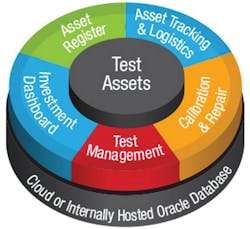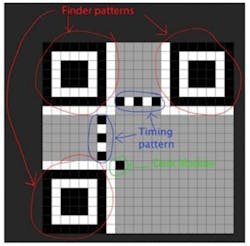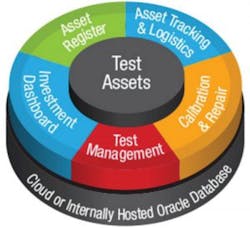Asset management software (AMS) is a good example of a term that may appear to be self-explanatory but actually means different things depending on the type of organization and the department that is using it. There’s always a database of some kind that records information about assets. But, AMS products differ widely in the level of additional capabilities they provide.
Many small companies initially use a homemade spreadsheet to manage assets, and that’s a simple solution if only a small number of items are involved and their mix doesn’t frequently change. On the other hand, as a company grows, a spreadsheet’s inherent limitations soon are recognized.
Rather than directly working with serial numbers and text descriptions, AMS products often rely on a special identification tag attached to a physical asset. This can be as simple as a one-dimensional barcode that can be scanned with special wireless scanners or smartphones and the information automatically used to update a central database.
A common extension of this idea is to use a label with a two-dimensional quick-response (QR) barcode, which can convey much more information. Depending on the pattern’s resolution, as many as a few thousand characters can be encoded. Typical commercial applications embed a relevant URL so that scanning with a smartphone immediately provides the user with more details. For example, a QR code on a food product could link to a website with nutritional information and claims about the product’s benefits.
For an AMS application, asset-related information that does not change—such as purchase date, product description, and the company name—could be encoded along with the identification number. Figure 1 identifies some of the standard required areas in a typical QR pattern.
Courtesy of Thonky
Moving on from relatively simple isolated solutions and conforming to the ISO 55000 Asset Management System Standards means that an organization has adopted a transparent and well-documented approach to asset management. As an SAP white paper1 explains, “It’s important to note that meeting the ISO 55000 standards requires more than just a standalone asset management application. The scope of the standard is enterprise wide, so other asset categories, such as financial assets, human assets, information assets, and intangible assets, must be integrated with the activities and practices being used to manage physical assets.”
For SAP and rival software company Oracle, an AMS product may be a highly optimized module intended for use with other modules in a comprehensive enterprise resource planning (ERP) or enterprise resource management (ERM) software suite that covers all aspects of an organization’s activities.
Assets, assets, assets
Physical
The GoCodes Asset Management cloud-based system relies on affixing a QR label to each piece of equipment. The clever part is using a smartphone to scan the label. Not only does this allow you to log into the central database from anywhere, but also the tagged item gets associated with the phone’s GPS location each time the label is scanned.
According to a recent PC MAG.com review,2 “GoCodes stickers provide the current location of the asset, plus the app has the flexibility to specify details about each asset, including custom information on the sticker itself and custom fields on your screen. Another advantage of a physical solution is the possibility that a lost asset will be returned by a Good Samaritan. In addition to scanning the QR code, the GoCodes website offers anyone who finds a tracked asset with the ability to directly enter the number, without requiring any app downloads.”
AMS systems can be adapted to maintain many kinds of information relevant to a physical asset. For example, the California Code of Regulations3 specifies the responsibilities of automated external defibrillator (AED) providers. In part, the regulations require that “… the defibrillator is maintained and regularly tested according to the operation and maintenance guidelines set forth by the manufacturer and according to any applicable rules and regulations set forth by the governmental authority under the federal Food and Drug Administration and any other applicable state and federal authority.”
The regulations also mandate that, “The defibrillator is checked for readiness after each use and at least once every 30 days if the AED has not been used in the previous 30 days. Records of these periodic checks shall be maintained.” This regulatory requirement is similar to any scheduled maintenance associated with an asset and can be handled by an AMS system. A report generated by the AMS can prove compliance by listing successive test results and their dates.
AssetCloud is an AMS available from Wasp Barcode Technologies that, according to the company’s website, “… currently manages equipment across hundreds of different industries including construction, manufacturing, law enforcement, fire departments, energy restoration, and the United States military. AssetCloud uses barcode scanning capabilities, which allow your organization to track equipment system wide.” While barcodes are used to identify assets, a sign-in, sign-out scheme accounts for asset relocation. Instead of GPS information, locations such as “storeroom 1” are entered into the database.
In addition to keeping track of asset details, this AMS addresses the broader requirements of medium to large enterprises, such as managing contracts, service agreements, and software licenses. The program also has five customizable methods of asset depreciation.
Microlease’s LEO Asset Management Solution (Figure 2) includes aspects common to other physical asset management systems and some unique capabilities. Because the company both sells and leases test equipment, in addition to helping to manage assets, the Microlease AMS also serves as a marketing tool. As the company’s website comments, “This allows us to accurately analyze your situation, identify areas for improvement, and propose a world-class test management process redesign.” Of course, you can ignore the recommendations and simply use the system for asset location tracking and depreciation management.
Courtesy of Microlease
The website further explains that LEO utilizes the Oracle database and, similar to other AMS applications that are intended for use by larger organizations, “… is compatible with all other major ERP financial systems including SAP and Oracle Financials. LEO’s database server runs on a wide range of hardware platforms and can be hosted either internally or in the cloud.”
And, because of its test-related features, LEO also can help an organization to more accurately calculate the cost of test. The Test Management section assists with “… scheduling and managing specific test projects by assigning assets and engineers.” And, the Investment Dashboard helps you to “… monitor key performance indicators of your business to make informed decisions.”
In contrast, MATsolutions, an accredited calibration lab, takes a standalone approach to working closely with companies that want to outsource test equipment asset management. As the company’s website proposes, “From our Dataview Browser online management tool to completely outsourced calibration and asset management programs, MAT tailors flexible custom support solutions….”
The Sage Fixed Assets program also has physical asset tracking capabilities but emphasizes the financial side with 300,000 GAAP and IRS rules for depreciation and several tax forms for direct submission. The Sage website states, “An accurate inventory is essential to your organization’s internal control of fixed assets, helping to prevent theft, realize loss or damages, and ensure accurate insurance coverage and costs. An inventory helps you eliminate accounting inaccuracies due to ‘ghost assets’—fixed assets that are on your books but no longer at your company.”
This application uses barcode labels to identify equipment and can conduct inventories concurrently at multiple locations with reconciliation in a central database. In addition to text strings representing serial numbers, locations, and activity history, the program stores photos and related documents such as invoices.
Software
For an organization’s IT department, components of the physical plant such as routers, switches, and computers are included in an AMS system, but so too are licensed software applications. As a recent white paper4 discusses, the installed software and its use patterns can be remotely determined if your ASM system has the right mix of agentless scanning software to deal with most of the connected assets as well as installed agents to monitor computers.
The paper notes, “Knowing what you’re working with tells you what patches you need to deploy, what software licenses you need to own, what warranty coverage you’re entitled to, and what repairs you need to be prepared to make.” Proving compliance—in this case, showing that your organization holds current licenses for all installed software—is an important benefit of an automated system.
Dell, the company promoting the five steps discussed in Reference 4, recommends the KACE K1000 Systems Management Appliance, which is a specially configured computer that “… captures detailed configuration information for desktops, notebooks, servers, printers, and networking equipment such as routers and switches.” The K1000 is available as a physical computer system or as a cloud-based service.
Looked at more broadly, AMS systems are management tools that gather and present information to assist decision making. Examples given in Reference 4 include the opportunity to reduce license costs by knowing how many people actually use a given application and choosing how an application is provided if only one application among several in a licensed software suite is being used.
Pulseway from MMSoft Design is an IT-oriented AMS system described in a recent PC MAG.com review as a “… powerful and easy-to-use mobile client.” You need to install agent software on your computers to provide full remote control and data collection. And, you must configure SNMP management information base variables before SNMP devices can be discovered and monitored. However, as the article notes, once the initial setup is complete, operation is straightforward in large part due to the good user interface.
Asset management redefined
Fluke manufactures a wide range of handheld electronic test equipment including multimeters, oscilloscopes, and thermal imaging cameras. Largely intended for the plant maintenance market, many of these “test tools” have a wireless capability via the company’s Connect software suite. In addition to the basic Connect Measurements module, you also can focus on the performance of particular assets through the Asset and Condition Monitoring applications.
Although the Fluke Connect website mentions asset management, in this case the “asset” is production equipment of some type. For example, you could be concerned about the status of motor number 47 that drives a critical pump. Using electrical and thermal tools, you can collect measurements over time so that any performance deterioration can be determined. Those measurements are directly saved into a cloud database via the Measurements app. Using the Assets module allows you to group only the measurements associated with motor 47 so that trends can be more easily found. And, with Condition Monitoring software, you can set alarms to continuously identify operational anomalies.
No doubt, the Connect software is very useful, but it’s better described as being in the condition monitoring category than as asset management. On the other hand, to plant maintenance engineers, the asset management phrase may imply production equipment performance and its optimization. According to information on the company’s website, Fluke Connect with the Asset module “… is the only system that saves measurements directly from your test tool into a work order.”
Correct sizing
There is no shortage of AMS systems from which to choose one that’s right for your company. An initial way to narrow the choice is to determine whether the software can be standalone or if it must integrate with a larger ERP or ERM application. Does your organization need to comply with the ISO 55000 standard?
Of course, you also must determine what types of assets you are going to manage—are they only physical assets, and if so, are they used at several locations? Alternatively, do you need to comply with software licensing requirements and perhaps also monitor software usage and performance?
And, when selecting an asset management application, does your company have the necessary IT skills to correctly configure and use the software? Finally, do you have the budget to afford the AMS system you have decided to buy? From the descriptions given on the various manufacturers’ websites, at least the budget question should be easy to answer: Comprehensive asset management is a necessary part of operating a business, even a small one.
References
- Enable Asset Management Systems with Integrated Enterprise Information Solutions Using Technology to Support ISO 55000 Standards for Asset Management, SAP, White Paper, November 2014.
- “GoCodes,” PC MAG.com, October 2015.
- “California Code of Regulations, Title 22, Social Security, Division 9, Prehospital Emergency Medical Services, Chapter 1.8, Lay Rescuer Automated External Defibrillator Regulations, Article 4. Operational AED Service Provider and Vendor Requirement, Section 100041. AED Service Provider Operational Requirements, parts 6 and 7,” 2009.
- “Five Steps for Easier—and More Effective—IT Inventorying,” Dell Software, December 2013.
For more information
About the Author



